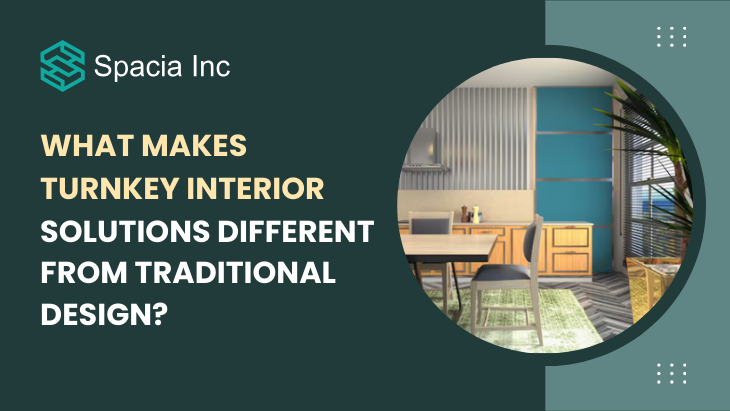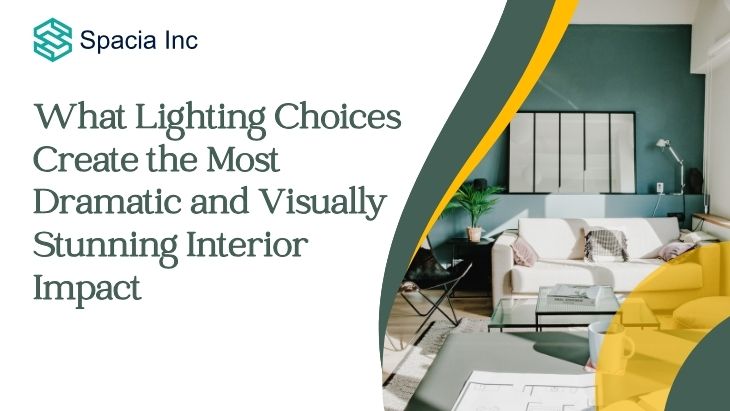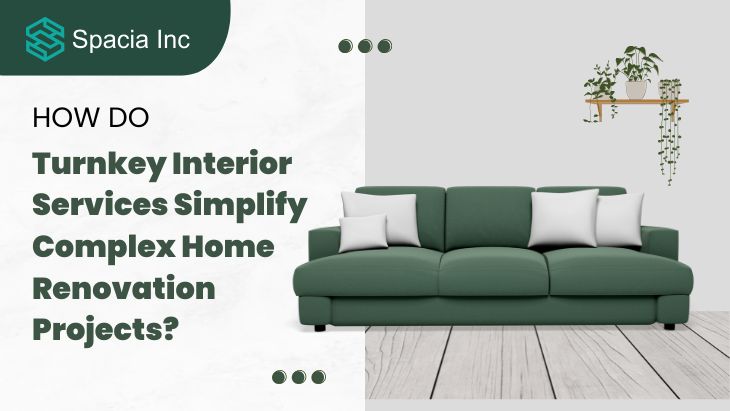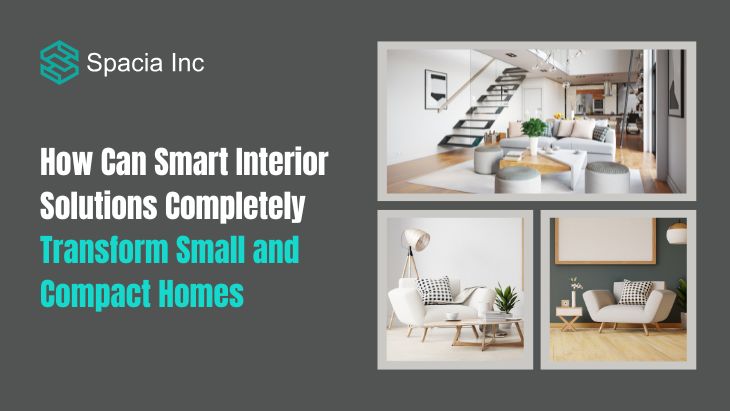Interior design has never been about designing functional and aesthetically pleasing space, but how design projects are addressed has changed. Interior Design & Turnkey Solutions More and more clients are opting for interior design & turnkey solutions over the conventional design process. Traditional design involves coordinating vendors, sourcing products, and managing execution, whereas turnkey solutions ensure a smooth process where one team addresses all. This change has provoked the question: what actually sets turnkey interior solutions apart from the traditional design process?
Knowing Traditional Interior Design
In a traditional interior design project, the designer will typically play only a conceptualization and planning role. He or she will develop layouts, choose materials, and give design advice but actually do the work themselves or have contractors, carpenters, or other vendors selected by the client perform it. This method offers the homeowner or business owner more control over the choice process but also adds to the time, effort, and decision-making. Conventional design regularly requires continuous monitoring by the client in order to maintain quality, timelines, and budgets.
The Emergence of Turnkey Interior Solutions
Interior Design & Turnkey Solutions, on the contrary, operate on the single-window approach. From conceptualization to material purchasing, construction, furnishing, and ultimate handover, every aspect is coordinated by one firm or group. The client gets a "ready-to-move-in" area without any concern regarding independent contractors or dealing with numerous moving parts. This holistic approach is picking up pace in residential as well as commercial ventures due to the less stress and time it involves and a consistent output from beginning to end.
Project Management: Who Does What?
One of the greatest turnkey vs. traditional design differences is in project management. In traditional arrangements, the client tends to become the project manager—juggling coordinating with contractors, vendors, electricians, and suppliers day in and day out. With turnkey solutions, the design firm itself is solely responsible for the project. The result is clients need only speak with one point of contact while the firm handles all the work behind the scenes. This not only minimizes confusion but also makes one accountable, as one team handles both design and execution.
Cost Efficiency and Budget Control
Budget is also one area where these two methods diverge. Conventional design at times comes at a higher cost than expected, as vendors might quote differently, and unexpected issues might cause the cost to escalate. With Interior Design & Turnkey Solutions, costs are most often agreed upon in advance. Because the same business is responsible for design and implementation, they are able to make precise estimations and maintain their budget without surprises. Clients enjoy honest pricing and greater cost control, which makes turnkey solutions particularly appealing to those with limited budgets.
Quality Consistency Throughout the Project
In conventional projects, the quality of delivery relies on the dependability of various contractors and vendors, leading to inconsistencies. For example, the carpentry might not be as the designer envisioned it, or the use of substitute materials might occur without the client's consent. Turnkey interior solutions avoid this risk since everything is in one hand. The design team guarantees that the original vision is matched in terms of the quality of materials, craftsmanship, and finishing, thus providing consistency in the final product.
Timelines and Speed of Execution
Time is the other important aspect in which turnkey solutions differ. Conventional design projects can take months, sometimes because of poor communication between vendors, delays in supply, or poor coordination. With Interior Design & Turnkey Solutions, everything is meticulously planned and coordinated by a single team, cutting delays. Since design, sourcing, and construction are handled by the same company, projects get done quicker and are delivered on time, as promised, which is a big plus for busy entrepreneurs and professionals.
Client Involvement and Convenience
Classic interior designing usually requires a lot of client involvement. From tile selection to overseeing electrical fittings, the client is actively involved in day-to-day decision-making. It can be taxing on people with hectic schedules. Turnkey solutions, as opposed to others, rely on convenience. The "hassle-free" experience is one of the largest reasons turnkey interiors are gaining popularity in urban lifestyles.
Personalization and Creativity in Design
One common myth is that turnkey solutions constrain creativity relative to conventional design. True, the latest turnkey companies value individualization just as much as conventional designers. The difference is in how, after the design process, the implementation follows the agreed-upon concept without alterations. With technologies such as 3D visualization and AI-driven design planning, the client can visualize precisely how their rooms will appear before construction starts, guaranteeing satisfaction while upholding efficiency.
Why the Future Is for Turnkey Solutions
The increasing demand for interior design & turnkey solutions is an indicator of how contemporary clients prioritize ease, dependability, and promptness. Although conventional design provides greater client autonomy, it is accompanied by stress, holdups, and uncertain expenses. Turnkey interiors, on the other hand, provide end-to-end solutions designed to deliver under one single umbrella. Not only does this integrated concept streamline the process but also guarantees quality, fiscal prudence, and on-time delivery. For homeowners as well as commercial outlets, turnkey solutions are emerging as a more intelligent and future-proof approach to upgrading spaces.
Conclusion
What separates turnkey interior solutions from conventional design is responsibility, efficiency, and client experience. Spaciainc Conventional design needs the client to perform as the coordinator, whereas turnkey solutions deliver a complete, end-to-end process. Through merging design creativity with professional service, turnkey solutions give a smooth ride from concept through to completion. With lifestyles becoming increasingly hectic and expectations for efficiency higher than ever, Interior Design & Turnkey Solutions is raising the benchmark in the way interiors are delivered.





Leave a reply